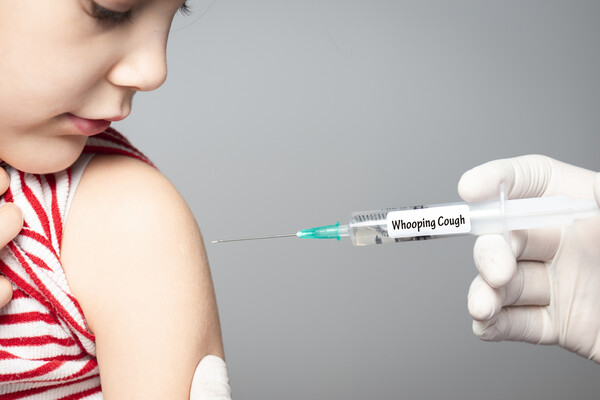As the whooping cough continues to spread worldwide, Korea has also recorded a significant increase in the number of patients, especially among children and adolescents.

The Korea Disease Control and Prevention Agency (KDCA) said Friday that the number of pertussis patients has increased steeply this year, reaching 1,365, including suspected cases, as of June 1.
By age, children aged nine to 13 accounted for 49.6 percent (617), and seven to 12 represented 37.5 percent (512), with those aged seven to 19 accounting for 87.1 percent of the total, with 1,129.
By region, South Gyeongsang accounted for 39.8 percent (392), followed by Gyeonggi (143, 17.4 percent), Busan (109, 8.0 percent), and North Gyeongsang (90, 6.6 percent). Educational facilities have reported group outbreaks.
Pertussis has been a global epidemic this year. In the U.S., 4,864 cases were reported as of April 25, about 2.8 times more than last year (1,746), and the Philippines reported 2,521 cases and 96 deaths as of April 27. China has also reported 91,272 cases in April alone, with 20 deaths so far this year.

Korea's pertussis immunization rates are higher than those of major industrialized countries, with 97.3 percent of one-year-olds (DTaP three-dose) and 96.8 percent of elementary school students (DTaP five-dose) immunized. These compare with the U.K.’s one-year-old DTaP three-dose rate of 91.9 percent and the U.S. two-year-old DTaP four-dose rate of 80.4 percent.
Accordingly, there are fewer cases here among children under one year old, a high-risk group for severe infection, and no deaths have been reported in the past ten years. However, if the number of cases continues to increase, there is a risk of severe complications or loss of life due to infection.
It is important for unvaccinated people who are at high risk of contracting pertussis and spreading it to friends and younger siblings, incomplete vaccinators who have not received a full series of six doses, and grandparents caring for children under the age of one to get vaccinated with pertussis vaccine (Tdap) at least two weeks before contact with children.
“The current global pertussis outbreak is expected to continue for some time due to a combination of factors, including the absence of pertussis outbreaks during the Covid-19 pandemic, declining immunization rates in many countries, increased international travel, and advances in PCR testing,” KDCA Commissioner Jee Young-mee said. “Timely vaccination of infants under one year of age, who are more likely to become severely ill if infected, is prerequisite, followed by booster doses at 15-18 months, 4-6 years, and 11-12 years of age.”
Jee added that the government is closely monitoring the pertussis outbreak and is considering temporary vaccination of pregnant women and healthcare workers who are likely to transmit pertussis to infants under one year old, along with South Gyeongsang Province, which has the highest number of pertussis cases, and collecting pertussis pathogens nationwide to analyze genotypes and treatment (antibiotic) resistance quickly.
“Parents and teachers are urged to keep their children home from school and seek medical attention if they suspect that they have a respiratory infection, including pertussis, and to actively encourage them to practice handwashing and cough etiquette in their daily lives,” the KDCA head said.

